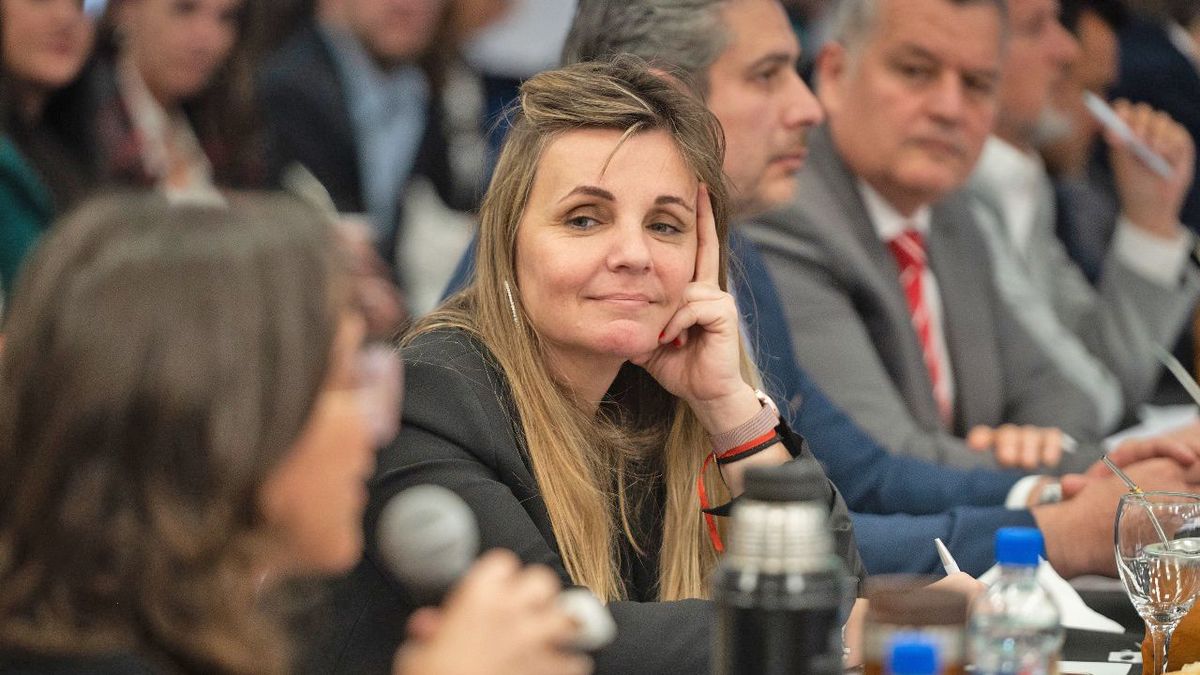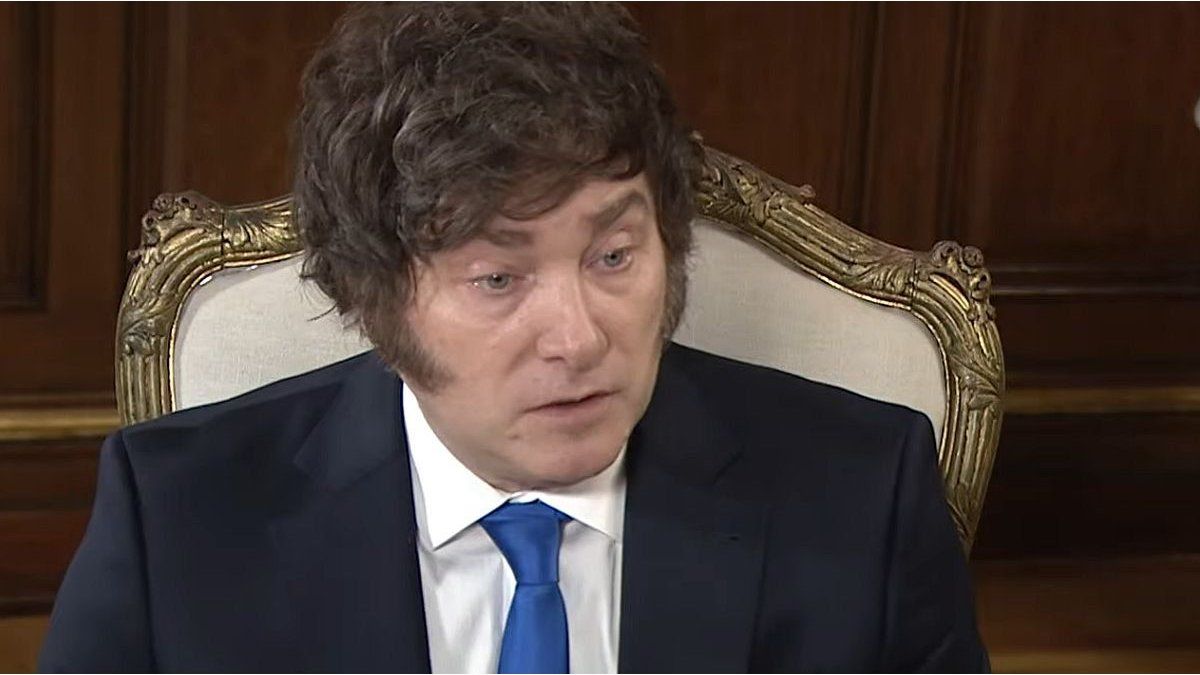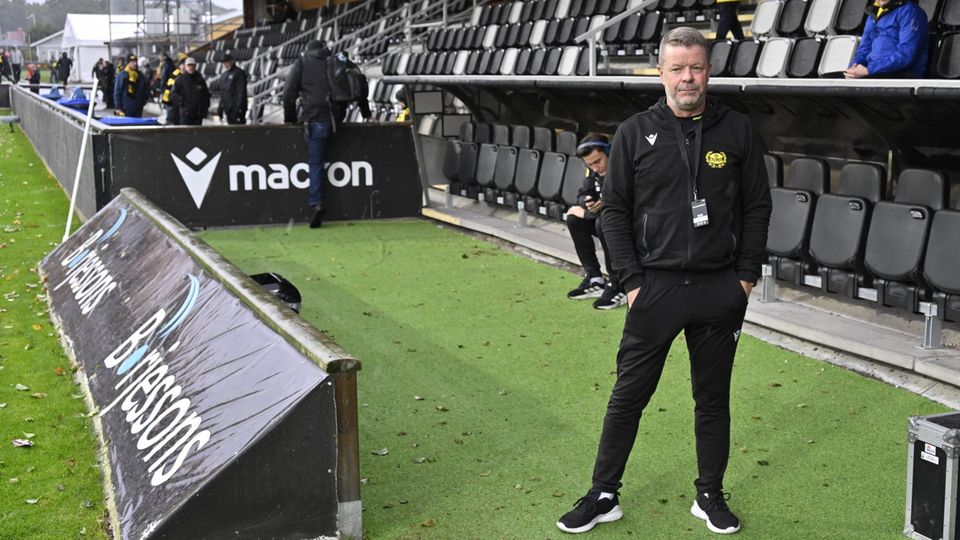In this framework, Martínez accused the national government of promote outbound tourism abroadquestioned the late promotion of internal destinations and lack of measures to promote local destinations. “The salary delay and the elimination of taxes for trips abroad affect domestic tourism and its competitiveness,” he added.
Children play volleyball at the Recreo parador.jpeg
According to the Buenos Aires government, activity on the Atlantic Coast fell.
Journalist: How was the beginning of the summer season in the Buenos Aires destinations?
Soledad Martinez: The season started with a certain medium occupancygiven the context. On the one hand, on the Atlantic coast, the weather was not favorable during the first days of the year and, on the other, Christmas and New Year fell on a weekday. That didn’t help people take those days. As the weather began to improve, the people of AMBA – which is the main source of tourism on the Atlantic coast – began to flock to our destinations. There is a slightly slower start than in other seasons.
Q: What is the outlook today and the projection for the second fortnight?
YE: The second fortnight always tends to be the highest and busiest in the province. The weather is spectacular. Last weekend we saw it increase quite a bit and on Monday it fell again. It is a behavior of 4 or 5 average days of stay. Stays have been shortened and there are cost cuts: people do not go out every day, but only one; They buy food at the grocery store or supermarket and have a picnic on the beach instead of eating at the hostel; They share a house with several people and don’t stay in hotels as much. Tourist consumption is a little more diesel.
Q: The national Secretary of Tourism, Daniel Scioli, said that the coast is exploited and criticized the “prophets of disaster” who say that there is no movement or consumption.
YE: The Secretary of Tourism remembered late that he had to promote domestic destinations. They spent the whole year campaigning and promoting outbound tourism. This is seen not only by the summer numbers, but also that in November outbound tourism abroad rose by 40%. This speaks of a clear intention of the national government to favor tourism abroad and not tourism inside.. I think he realized this in the first days of January, probably alerted by mayors and officials of his own political stripe, and he went out to do a kind of campaign in favor of internal destinations, but it was already too late. He did the same with that pantomime of asking the City of Buenos Aires to start classes laterwhen it is something that we from the provinces had been warning about since last year. Everything seems like a stage show to me.
Q: Do you think there is a deliberate intention to encourage “travel outside”?
YE: I see coherence with the rest of the policies taken in the different areas. There is a strong imprint on eradicating national production and promoting imports, so everything goes along the same line, the destruction of one’s own for the benefit of what is external. The focus is on what comes from somewhere else and not on promoting production, local employment, and the growth of the country based on our resources. The same is in tourism, domestic tourism is destroyedoday travel agents are starting to sell abroad.
Q: What is the occupancy level?
YE: There is an average between 70 and 80 depending on the destinations. The most expensive destinations have the highest occupancy even in the same game. For example, Mar de las Pampas has higher occupancy than Villa Gesell; and Costa del Este is the busiest in the Costa Party. The ABC1 audience stuck to their spending. It is also the niche with the highest purchasing power that could have gone to Brazil or Chile. The same happens in Mar del Plata: The most expensive hotels are busiest and the two and three star hotels are fighting it.
Q: Did occupancy increase or decrease compared to other years?
YE: It remains, there are movements. What is shortened is the stay. That’s why comparison is also so difficult. Before we had longer stays. There is movement, it increases on weekends and decreases towards the week. There is also a lot of last minute speculation. There are not as many reservations, but then the occupancy is higher than before because people decide at the last minute, arrive at the destination, search and find accommodation.
Q: What destinations are the most visited and most affected by the crisis?
YE: The most visited are those on the Atlantic Coast but also, that is, very close they are still dressed with local water from AMBA such as Tigre and Chascomús, where people can travel by public transport. Those have continuous movement. There is movement, but people don’t spend as much.
Q: How does the fact that the dollar is flat affect?
YE: It makes us lose competitiveness. The ABC1 public can vacation elsewhere, because they have the incentive of eliminating taxes. Of course everyone can vacation wherever they want, The criticism is towards the State that does not promote domestic tourism and we lose competitiveness. At the time, with the Pre-trip, people were encouraged to stay here instead of going on vacation abroad, that made us more competitive and encouraged people to stay in the country. Besides, The delay in salaries means that the middle and popular classes see their savings capacity and their ability to allocate those funds to entertainment and leisure greatly affected, which is what people cut back on first when there is a crisis. It’s about doing as many free activities as you can. Not to mention a large family. The most affected are the cheapest destinations because people reduced their ability to vacation. In the first week of January there was 30% less long-distance bus service to the coast. If the frequency decreased it is because the number of those who travel by bus decreased, which are the middle and popular classes.
Children playing in the parador in the province of Buenos Aires.jpg
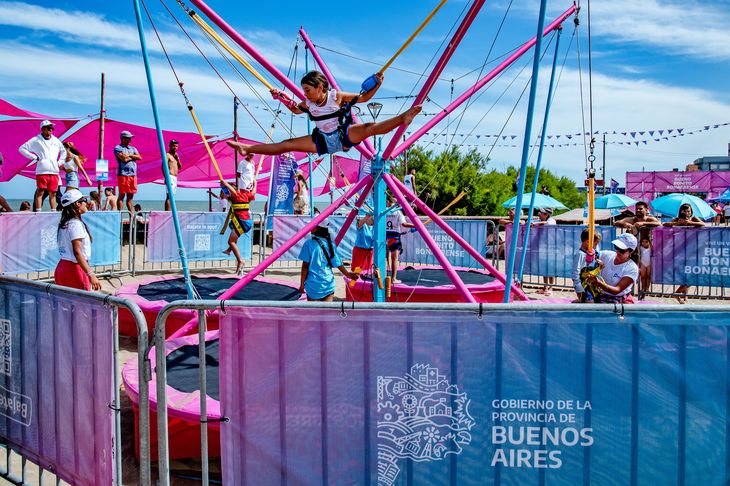
Q: How are the prices?
YE: I see them well. Some rabas on the beach are between 12 and 15 thousand pesos; a Milanese with puree, 12 thousand. These are prices that are obviously not for all budgets, but they are there are options for everyone. I don’t see it as superior to what a lunch costs in the city of Buenos Aires with the difference that you are looking at the sea. You can go to eat this very expensive, you can go to eat cheap, there is something for everyone’s budget.
Q: Mauro Moyano, vice president of the Cariló Chamber of Tourism, said that the tourist projection is worse than in 2001. How do you foresee the rest of the season going?
YE: It is difficult to make this prediction because the stay was shortenedso it is very difficult to compare it with the other. The good thing is that in the province of Buenos Aires classes start after Carnival, which makes it We will try to have a season that lasts until March 4 inclusive.. We hope it lasts at least until Carnival and that those who have school-age children can stay until the first days of March and that people can fully enjoy it.
carilo-bajada-playa.jpg
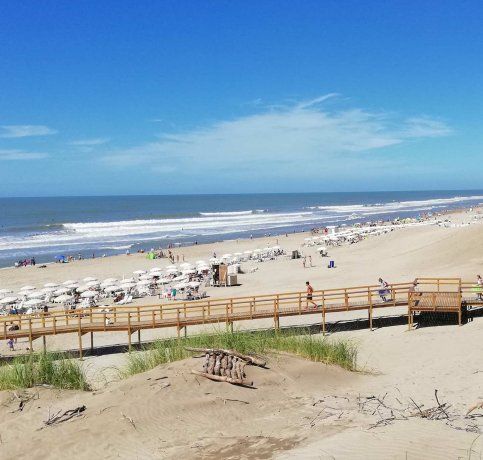
Carilo
Q: What policies did the province adopt to boost the sector in this context?
YE: We work all year round with Banco Provincia to put together different packages that are attractive to the consumer. such as refunds and benefits in DNI Account, but also with financing in interest-free installments to reserve hotels and transportation, discounts for tickets to theme parks, recitals and other cultural consumption. At the same time, we ran the “good, beautiful and Buenos Aires” campaign throughout the year in all airports, routes, graphics and television with high visibility. We also have the Telefé program “Travel Code” and we work on many issues related to diversifying products.
Q: Were infrastructure works carried out?
YE: They were carried out repaving works on the routes to the Atlantic coast before the start of the season, with an investment of more than 250 million dollars. We also opened two paradores and there is an immense offer of free shows in different tourist destinations.
Parador Recreo.jpeg
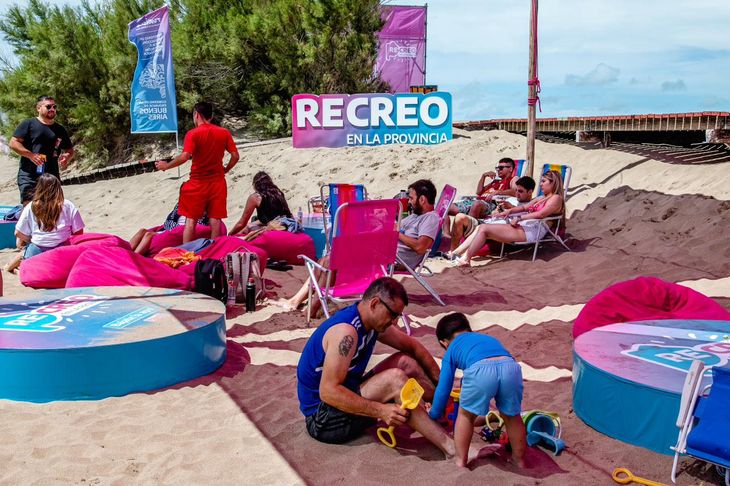
The province installed free hostels in different beach towns.
Q: What are the inns that the province installed?
YE: They are beach paradores, one in Villa Gesell and another in Miramar that operate every day from 10 a.m. to 8 p.m. and offer free daily activities. We believe that everyone should have access to entertainment, providing them with the facilities that all private inns have, but free of charge: shade units, water, shows and more than 600 activities.. Throughout the province there is a program of the Cultural Institute called “Cultura Rodante” and that brings these different shows closer to children. There is also all the theater offerings and exhibitions at the Museum of the Sea.
Tourism as a productive activity
Q: What policies can the province maintain despite the adjustment implemented by the national government to sustain tourism throughout the year?
YE: Based on the success of the End of Course Trip Program, tourism products were diversified. We work with the municipalities to find that attraction that, a priori, is not only given by the sea. We work with a small tourist infrastructure program to improve camping areas, changing rooms, docks or tourist offices. We support the thousand popular festivals in the province, where products are displayed and the local economy grows. This encourages and sustains employmentand makes tourism move. Historically, Tandil and Sierra de la Ventana were sold out of season, now agencies began to sell other destinations such as San Pedro, Chascomús and Cañuelas.
Q: Does the non-approval of the budget affect Tourism?
YE: Of course. It affects everything, but we have drawn the lines of work and we will become creative to make the most of everything we have available and continue promoting internal tourism and employment for the people who make a living from this.
Q: In economic matters, tourism is ranked as the fifth most important activity for Buenos Aires. Does this crisis in tourism affect employment sources?
YE: For now the activity is resistingbecause it increases a lot in the summer. From the province we try to promote continued employment opportunities. But, without a doubt, I believe that there will be injuries as there are in all other branches of productive activities.. Tourism is one of them and is greatly affected by seasonality, which is why it is so important that we work on this diversification of products. If the season is not good enough, if it is short, added to the general economic malaise, it will undoubtedly affect several cities whose fundamental activity is tourism.
Minister Augusto Costa and undersecretary Soledad Martínez.jpg
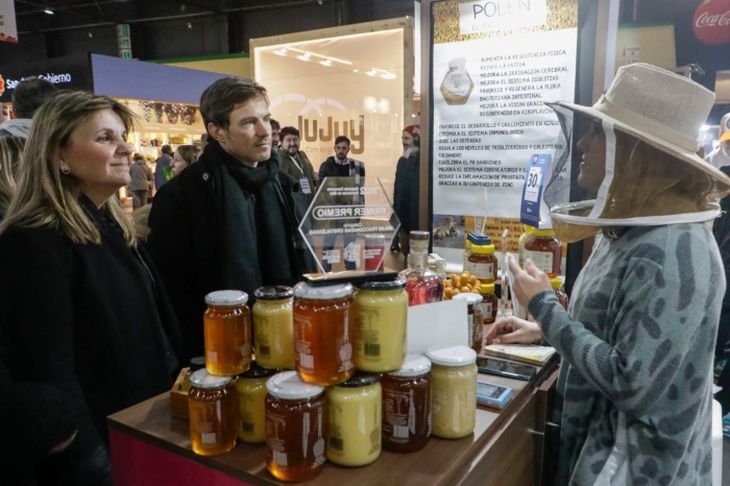
Martínez, together with Minister Augusto Costa.
Q: Do you have an estimate of how many people live directly or indirectly from tourism?
YE: Until a year ago, 12 thousand SMEs were directly or indirectly linked to tourism. It is a very transversal activity. When a city receives tourism, it works from the rubber shop, fixing flat tires, to the pharmacies, where you buy an aspirin if you feel bad. What it spills is extremely broad. It is, at the same time, one of the main first jobs for young people in gastronomy and hotels.
Q: What do the tourism, hospitality and gastronomy chambers tell you?
YE: The difference in stays and the fact that people don’t book. For the businessman, it is difficult to calculate the number of employees he needs or how much food to buy because he does not know how many guests he will have. Unpredictability worries them.
Source: Ambito

